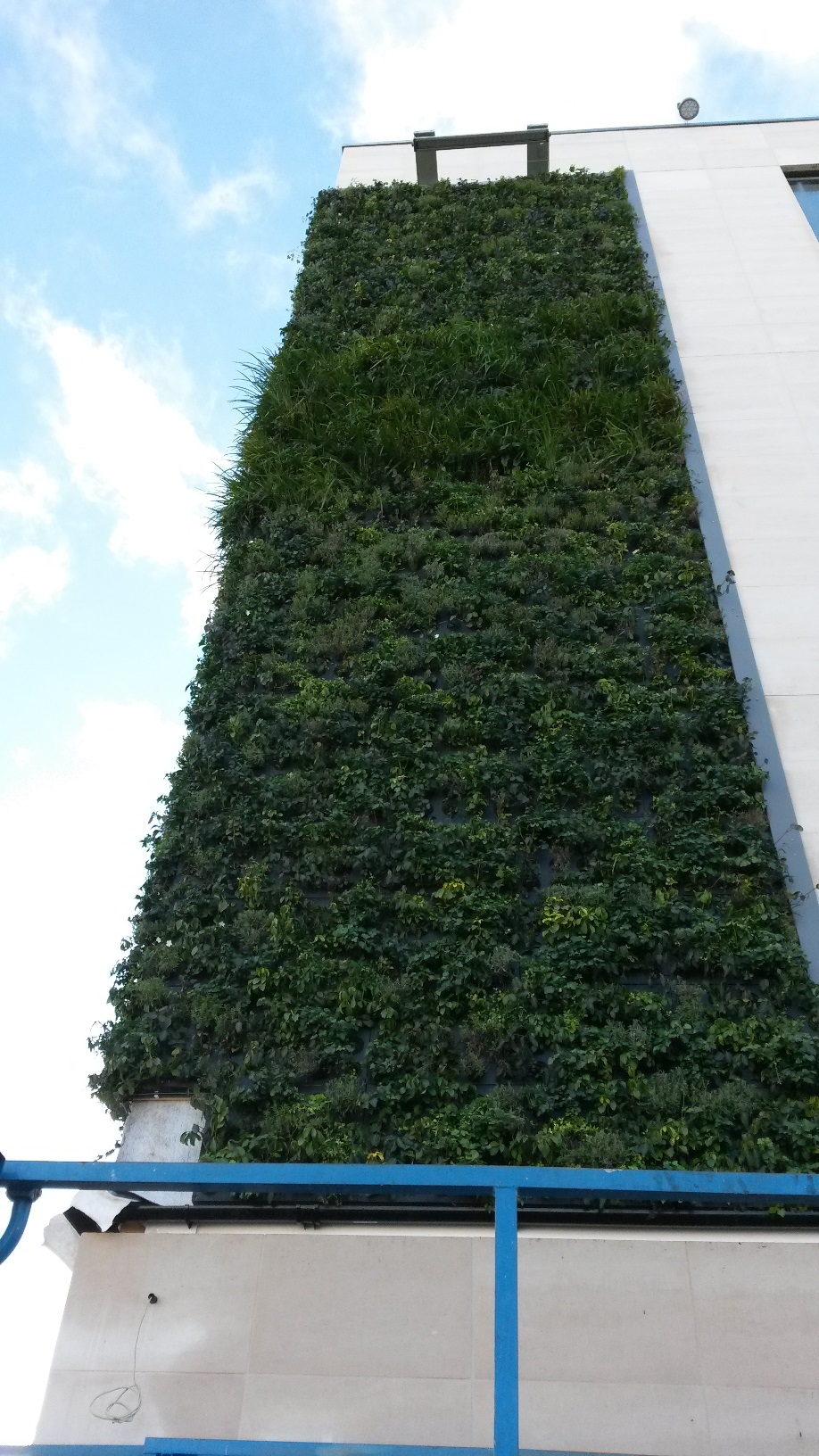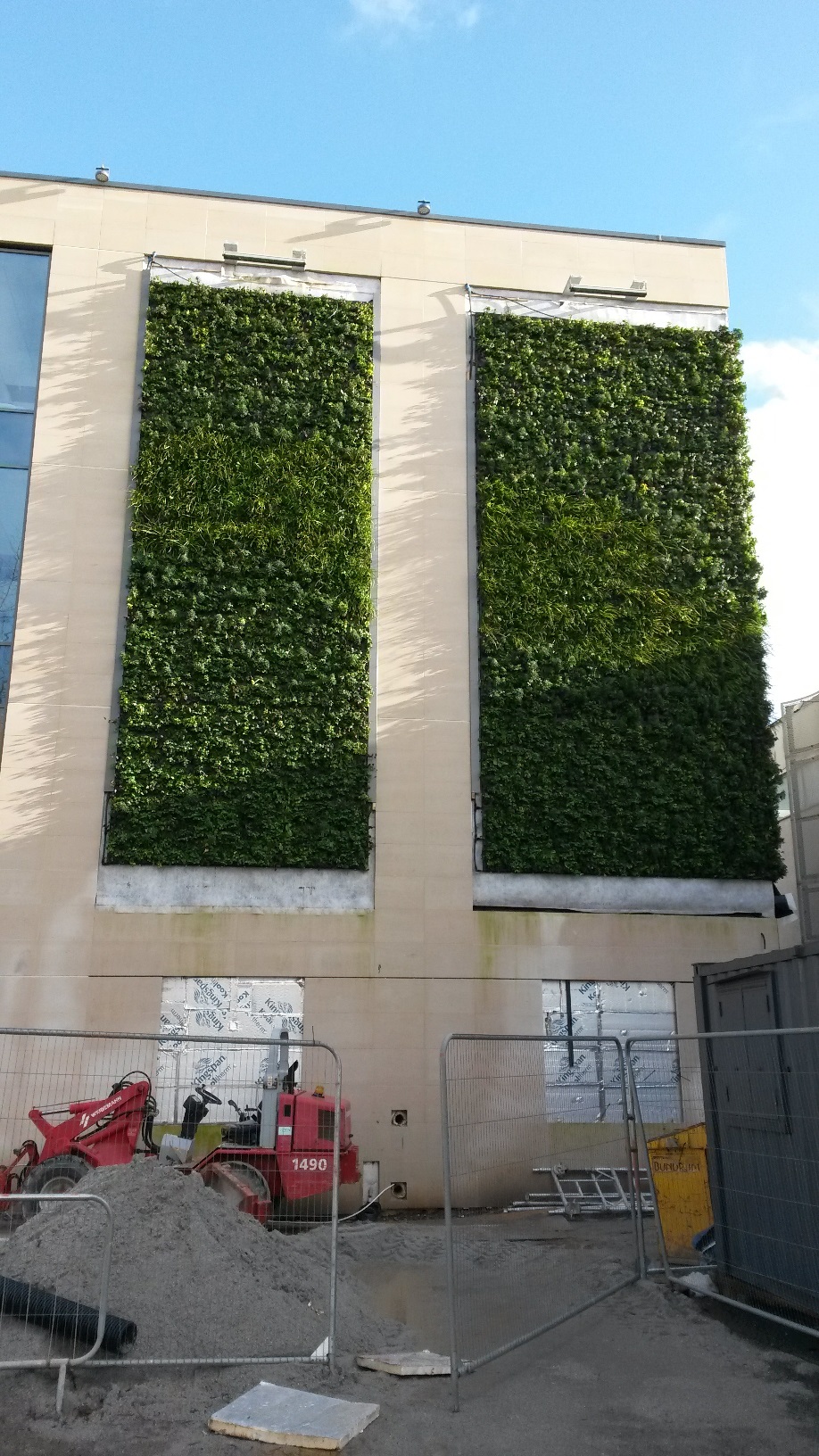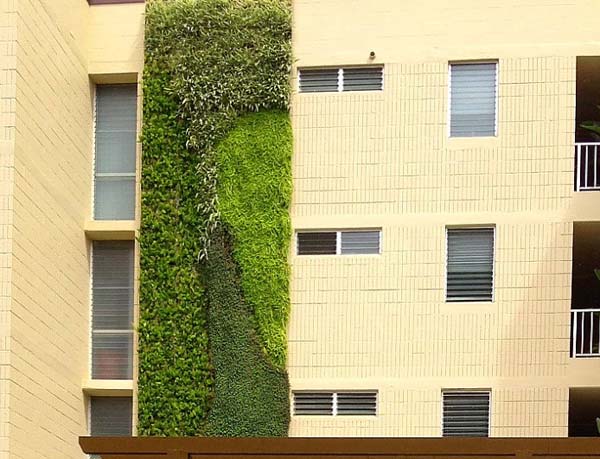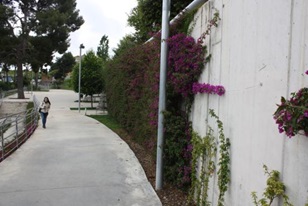
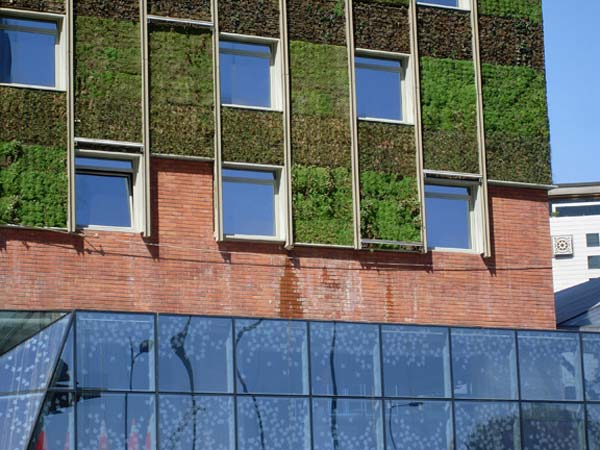
Green walls, also known as ‘living walls’, ‘ecowalls’ 'green facades' or ‘vertical gardens’ are a wall that is partially or completely covered with vegetation. Living walls, or green walls, are self-sufficient vertical gardens that are attached to a free-standing frame or to the exterior or interior of a building. They differ from green façades (e.g. ivy walls) in that the plants root into a structural support, which is fastened to, or close to the wall itself. The plants receive water and nutrients from within the vertical support instead of from the ground. Green facades usually includes a growing medium along the bottom of the wall, such as soil. Within our towns and cities there are enormous areas of wall space appropriate for the implementation of green walls, although, currently very little of this is being utilised.
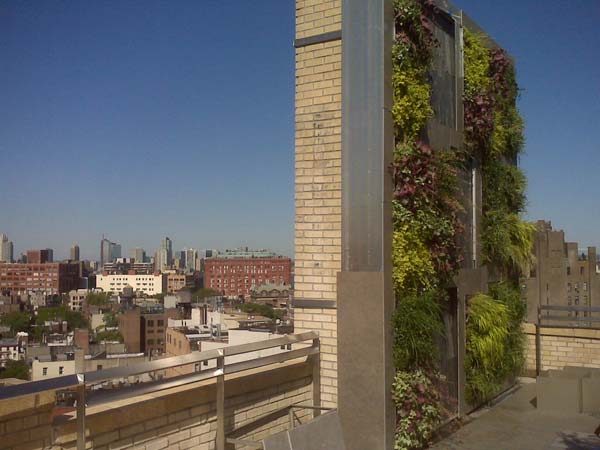
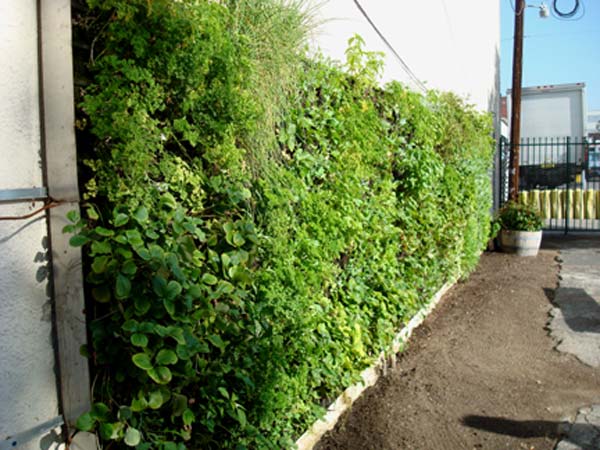
There is widespread belief that plants growing on walls are damaging to the buildings structure, by ripping out mortar and prising apart joints with their roots. There is very little evidence that supports this, except where decay has already set in and then plants can indeed accelerate the process of building deterioration. In fact, research has shown that a green wall can in fact help protect the buildings structure from the elements and radiation. Green walls can also be created using modular systems which use non-climbing plants in individual panels containing growing medium. Each panel is irrigated, and can support a range of vegetation types and species. Green facades don't need separate irrigation, as their roots are usually straight into the ground.
A variety of plants can be used in the design of a green wall, although it is important to remember that growing conditions can be difficult for some species due to extremes of temperature and moisture as well as the location and orientation of the chosen buildings wall.In an urban environment, pollutants may also affect plant growth especially mosses and lichens that are particularly sensitive.
Different types of plants can be used when planting a green wall to include climbers such as Ivy, Hop and Honeysuckle and herbaceous plants that grow on the wall itself such as Ivy-leaved toadflax, Sedum and Common toadflax. Some purpose built modular systems may use non-native species that can cope with the growing conditions, but it should be easy to specify native or near-native plants to help with the biodiversity quality of the wall.
Climbers: May need additional support structures built in as many species spiral upwards and around an object when growing. It is important to remember that different plants species may require a variety of support structures. Structures that can be used include timber battens, trellis work, steel cables, plastic ropes and plastic mesh. Whenever possible it is advisable to leave a small gap between the façade of the building and the supporting structure to maximise the effects of summer cooling and winter insulation.
Herbaceous plants: Conditions growing on the wall itself can be very difficult as plants grow within cracks already established within the building or on material that has accumulated. Designers may need to incorporate structures into the wall to allow herbaceous species to be planted directly or take root naturally; an interesting idea is for plants to be established onto polypropylene cladding tiles which have their own waterproof membranes and irrigation system.
Management
Plants may need to be pruned regularly to prevent them interfering with guttering, particularly once the wall is fully developed; frequency of pruning will depend on plant species. Other things to consider include, old walls may need to undergo some structural repairs such as re-pointing and the amount of irrigation required which will depend on the species used and wall aspect.
